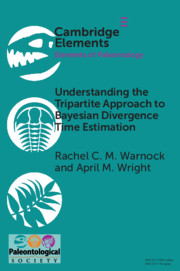Element contents
Understanding the Tripartite Approach to Bayesian Divergence Time Estimation
Published online by Cambridge University Press: 08 December 2020
Summary
Keywords
- Type
- Element
- Information
- Series: Elements of PaleontologyOnline ISBN: 9781108954365Publisher: Cambridge University PressPrint publication: 04 February 2021
References
- 22
- Cited by

